Recovery from delivery and caesarean section
The purpose of this leaflet is to give recommendations and practical advice to women who have given birth for a faster recovery as well as to introduce exercises that can be started immediately after delivery and caesarean section.
After delivery
- On the first day, all movements should be made in bed in a slow and controlled manner within a pain-free range.
- When getting out of bed or lying down, roll onto your side or kneel on all fours first.
- In the case of severe perineal trauma, avoid sitting upright on your bottom for three to five days.
- Sit on a donut pillow or make a U-shaped seat yourself. You can also use a body or nursing pillow.
- Before standing up, make sure you do not feel lightheaded.
- Change body positions during the day and move around.
- Use thicker unscented sanitary pads for 10-14 days and change the pads every four hours.
- After using the toilet, wash the external genitalia with warm running water.
- Use a cold gel pack to relieve pain.
- Get sufficient rest and sleep.
- Avoid lifting weights. Do not lift anything heavier than your baby for at least the first two weeks.
- During the first six weeks, try to lie down for at least one hour during the day to reduce pressure on the pelvic floor.
- If necessary, a postpartum belly wrap can be worn for the first six to eight weeks.
- Vigorous physical exercise should be avoided for the first six to eight weeks.
- It is allowed to go for a walk. Increase your walking distance gradually according to your comfort level.
After caesarean section
- On the first day, all movements should be made in bed in a slow and controlled manner within a pain-free range.
- When getting out of bed or lying down, roll onto your side first.
- Before standing up, make sure you do not feel lightheaded.
- Change body positions during the day and move around.
- Lie down on your back from time to time with both legs straight or hands over your head.
- Keep your back straight when standing or moving around.
- Support your lower abdomen with a pillow or hand when coughing, sneezing, defecating or laughing to reduce pressure.
- Wear high-waist underwear to avoid pressure on the wound.
- Resume your daily activities gradually.
- Ask for help with daily activities.
- For the first four weeks, do not lift anything heavier than your baby.
- Tighten the abdominal and pelvic floor muscles before lifting your baby.
- For the first six weeks, do light exercises (see the exercise section). Walking is also suitable.
- After six to eight weeks, see a pelvic floor physical therapist who will teach you scar massage.
When turning in bed, bend your knees one by one while supporting your belly with your hands. Roll your shoulders, hips and knees to the side at the same time. This way, you avoid twisting your body.
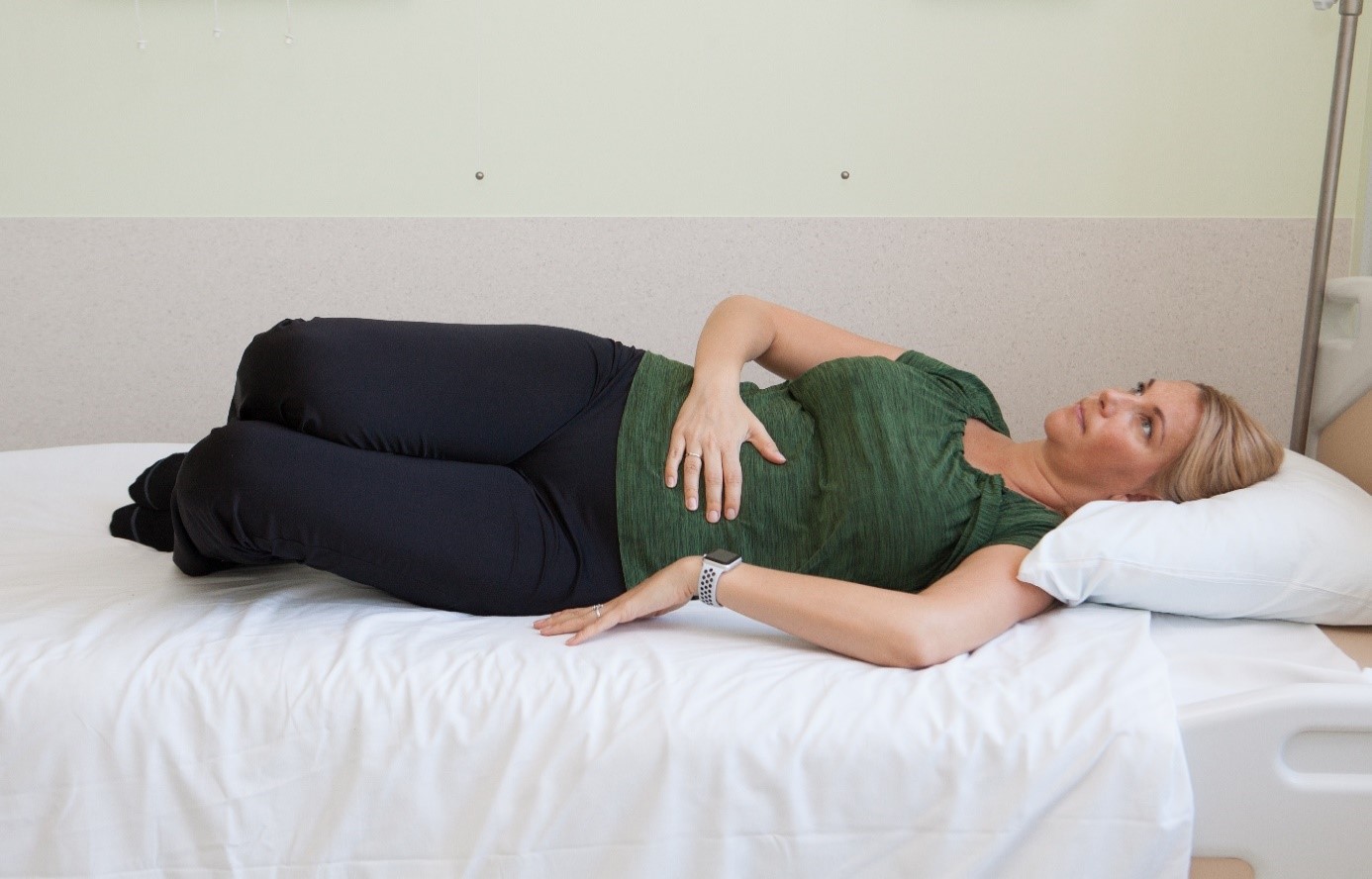
To get out of bed, bend your knees one by one while lying on your back and roll onto your side. Use your elbow and arm to push yourself up and swing your legs down over the side of the bed.
To get into bed, sit on the edge of the bed. Rest both hands on one side of the bed. Slowly lower yourself onto the side leaning on the elbow and then on the shoulder. Pull both legs onto the bed at the same time. Roll onto your back.

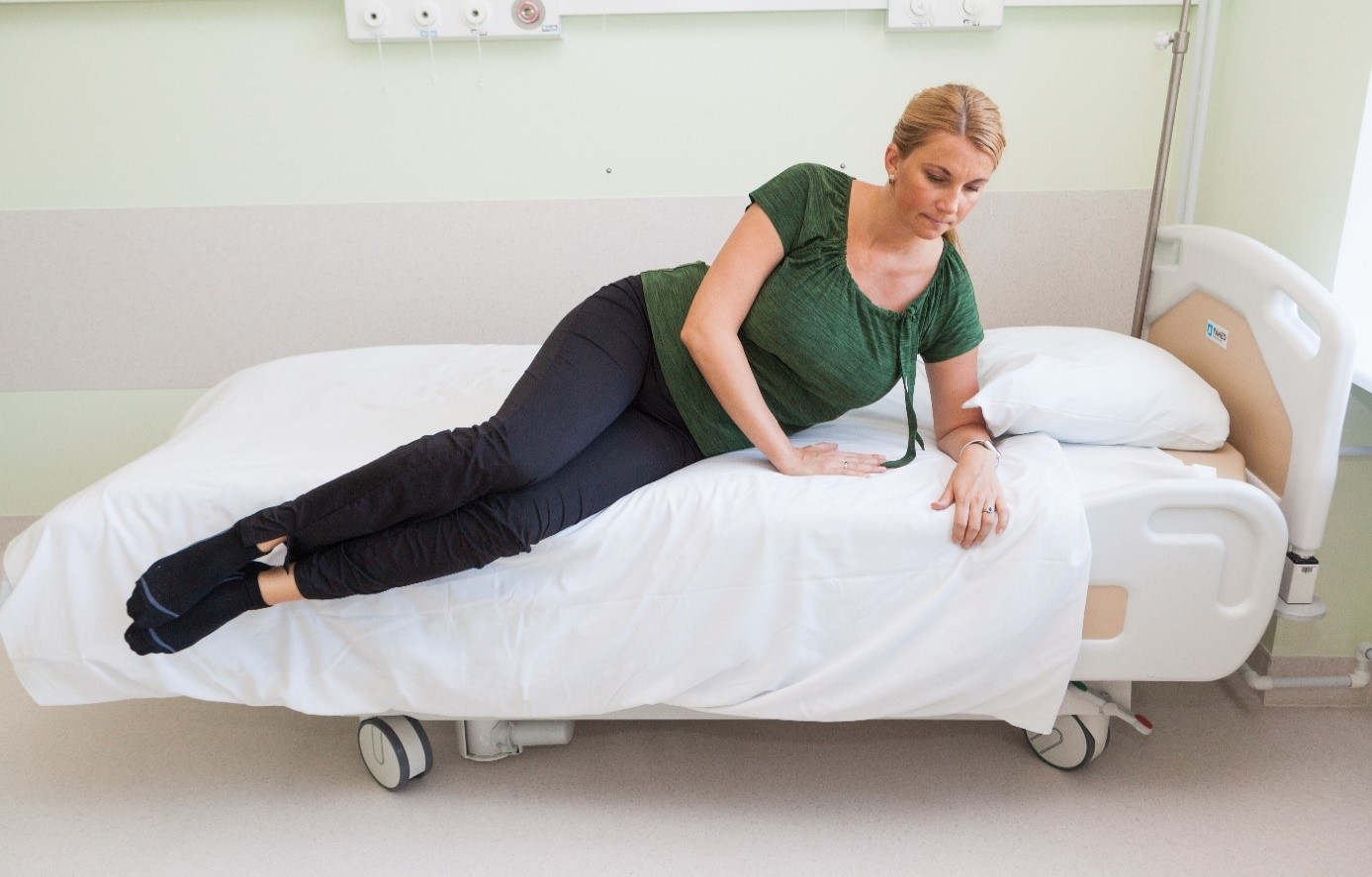
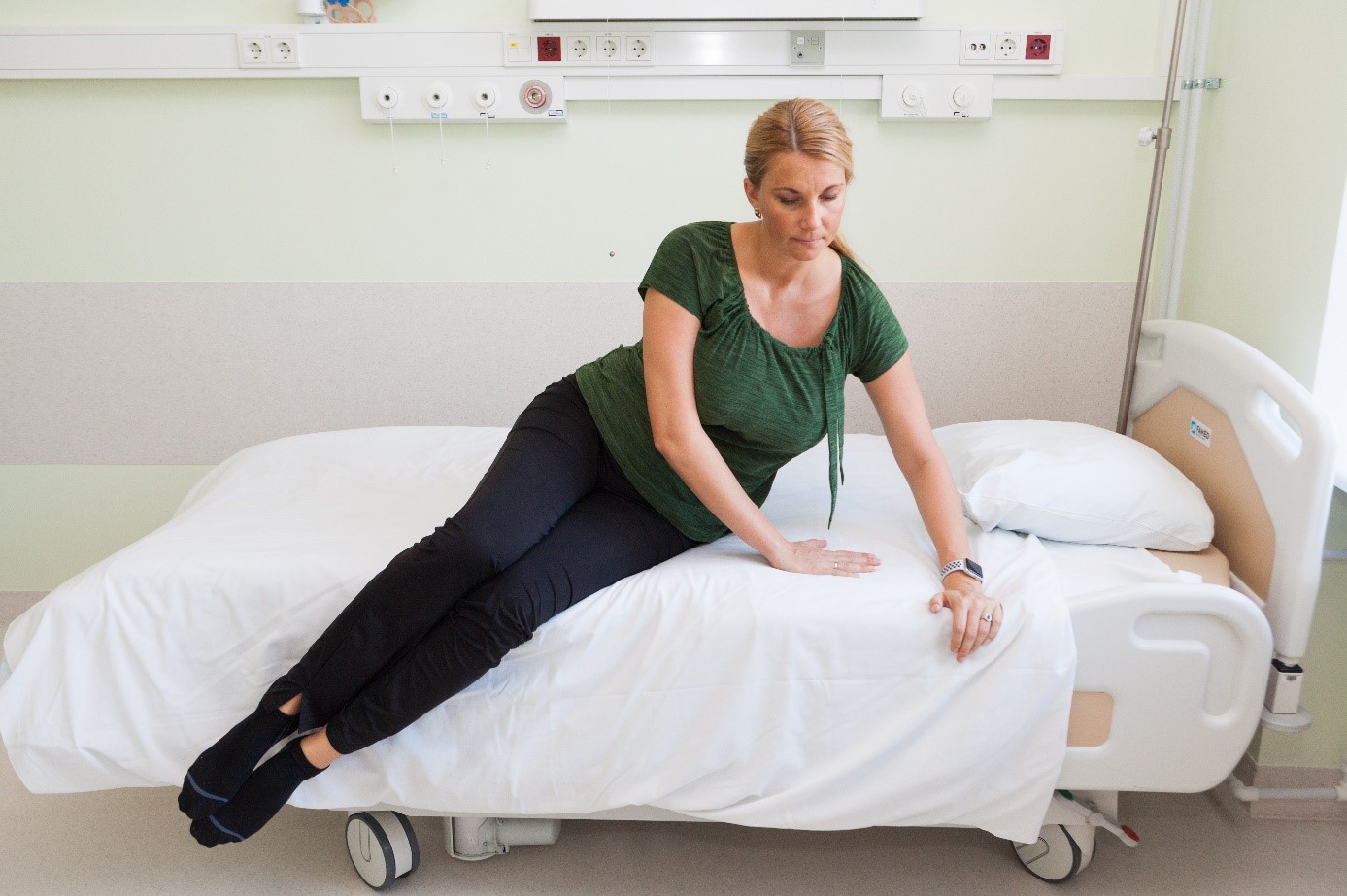
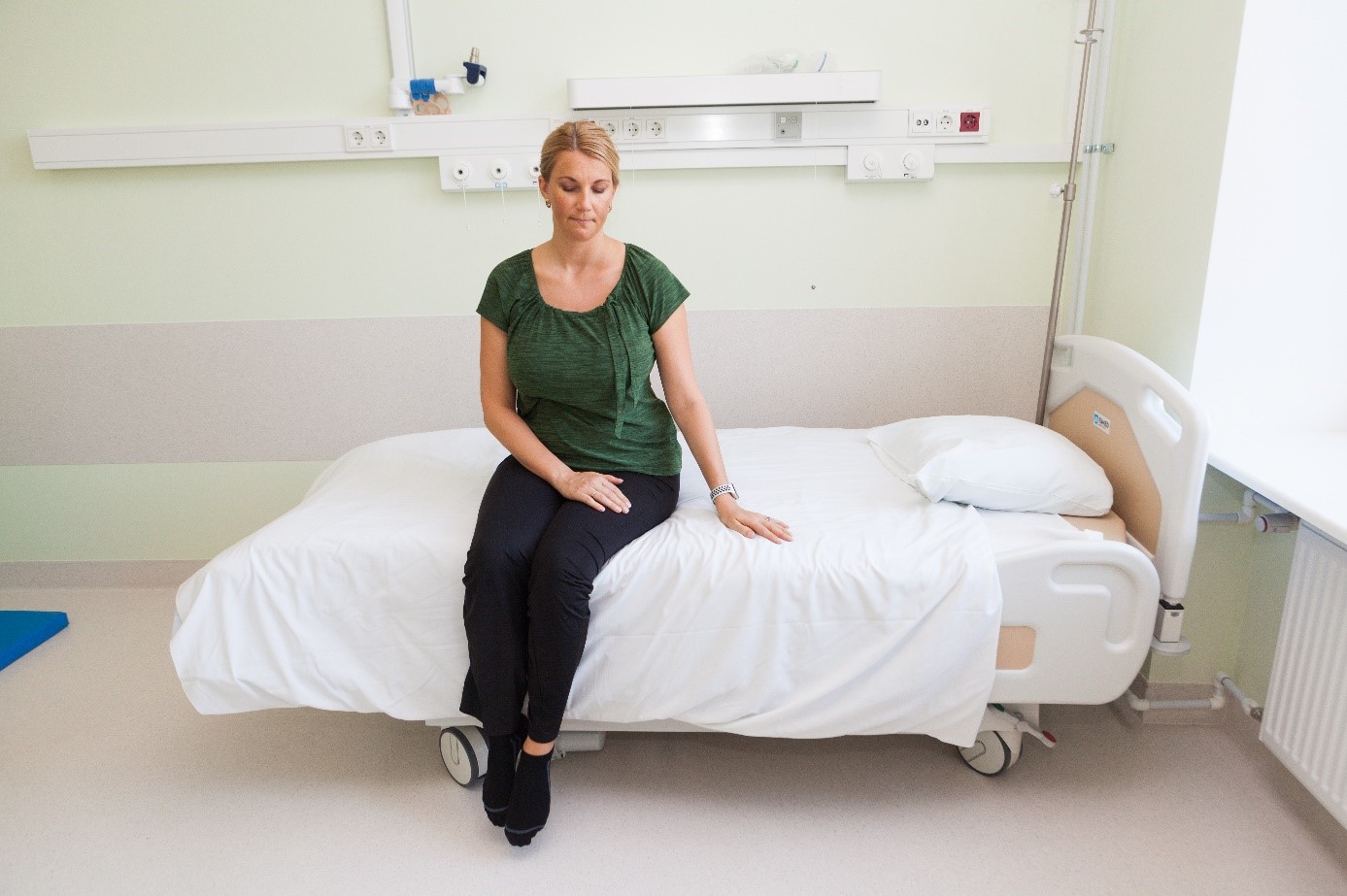
Use ergonomics in everyday life. It is very important to rest and focus on taking care of your baby. Keep in mind the principles of ergonomics when lifting the baby and changing diapers. Do not carry your baby on only one arm. Try changing sides and body positions when carrying your baby. Observe your posture from the side in the mirror and ensure your back is as straight as possible.
Avoid activities that require bending forwards for extended periods of time. When bathing your baby, set the bath at a suitable height or bend your knees. When lifting your baby or objects, hold the weight close to your body. Keep your back straight when lifting your baby or objects. Squat down and lift with your legs while exhaling and tensing the abdominal and pelvic floor muscles.
Any surface used for changing should be at the level of your hips. If the surface is at a lower height, kneel down and put a pillow under your knees for cushioning.


Vary your rest positions. When lying on your back, place a pillow under your knees. If your feet are swollen, elevate your feet on pillows or an exercise ball and move them actively.
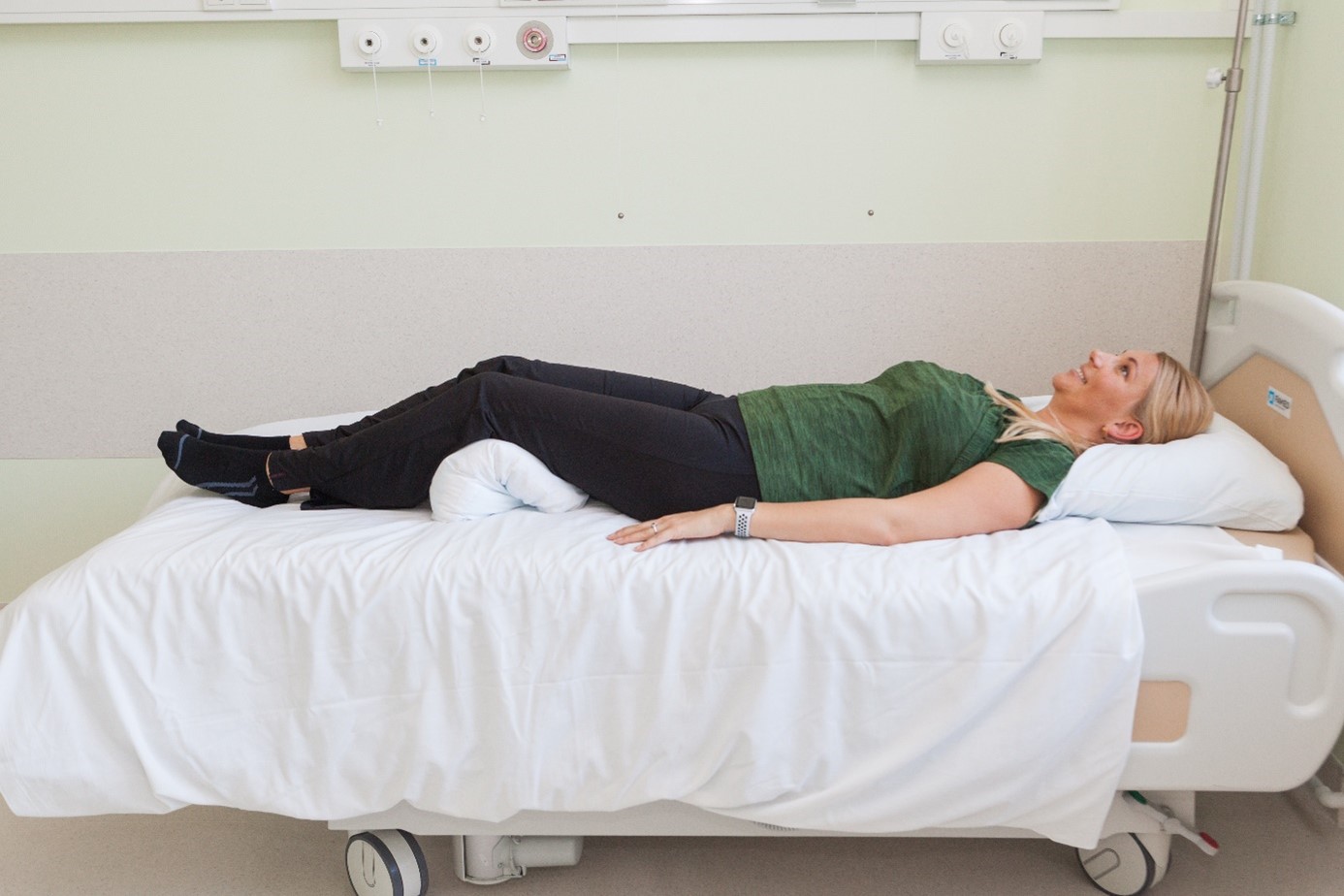
When lying on your side, place a pillow between your knees. When you are breastfeeding, you may also lie on your side next to your baby.
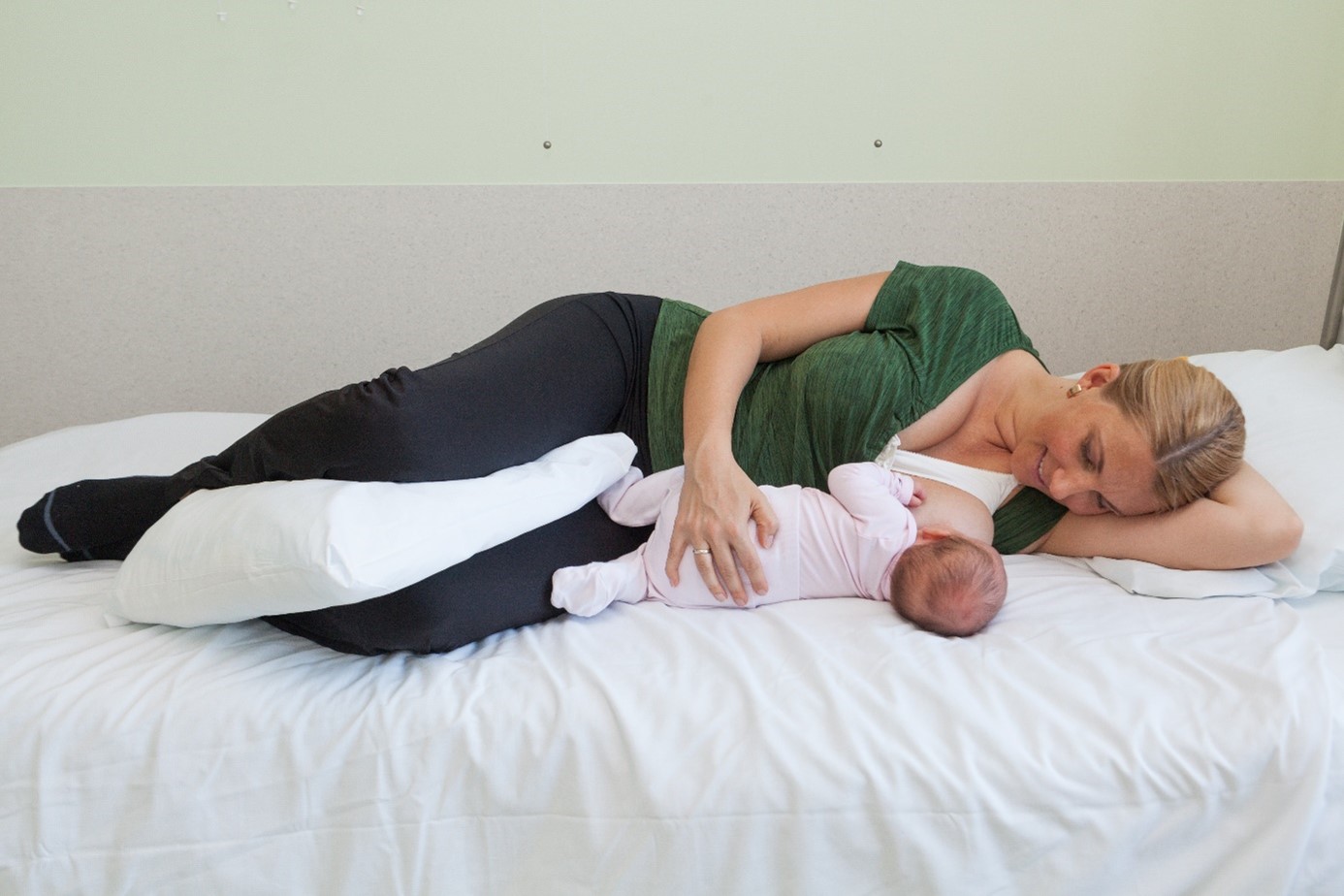
If you breastfeed in a sitting position, support your lower back with a pillow. While breastfeeding, use pillows to raise your baby to breast height.

In order for bladder function to return to normal, try drinking at least two or three litres of fluid a day and going to the toilet every two or three hours. This helps prevent the bladder from becoming over-distended, as the bladder may fill with urine faster after pregnancy. You may not immediately feel the urge to urinate. It may take some time for normal bladder sensations to return. When sitting on the toilet seat, place your feet firmly on the ground and relax your abdominal and pelvic floor muscles to allow urine to flow out. You can run the tap or urinate in the shower to relax your muscles.
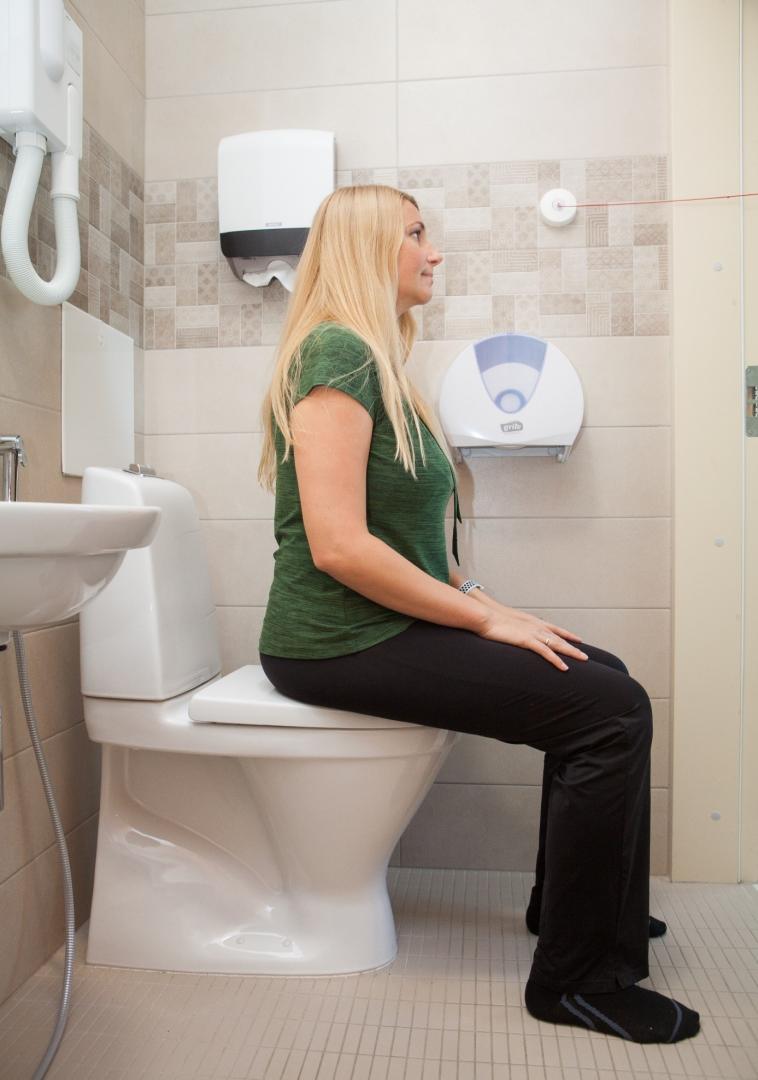
For the bowel function to return to normal, go to the toilet when you feel the urge. To avoid constipation, do not delay having a bowel movement. Having a bowel movement between three times a day and three times a week is considered normal. Eat fresh fruit and vegetables and avoid semi-finished products. Avoid constipation and severe pressure on the pelvic floor. When having a bowel movement, exhale through your mouth as you blow out candles. To facilitate bowel movements, sit on the toilet seat with your feet on a small stool. In the case of a perineal tear, you can support the wound from the front with a clean sanitary pad or toilet paper to reduce discomfort. If you had a caesarean section, you can support the lower abdomen with your hands.
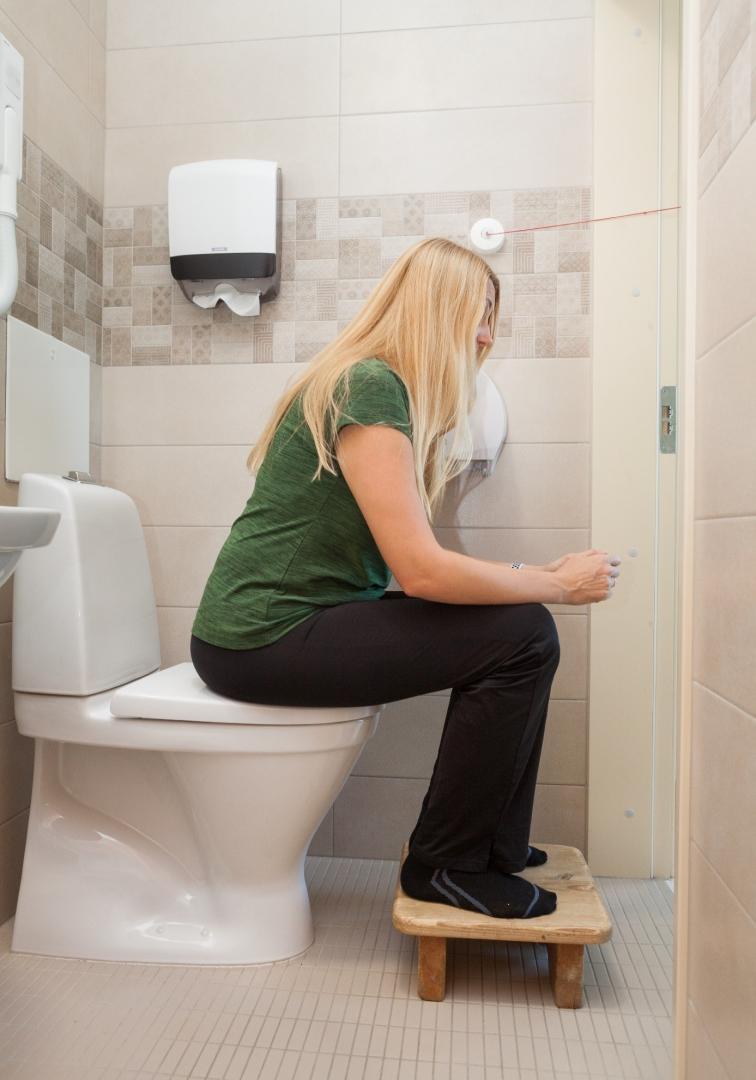
Exercises
Breathing exercise
Lie on your back with your knees bent and feet flat on the ground. Breathe in through the nose and out through a partly open mouth. Allow your body to move freely. Repeat the exercise while lying on your side.
Pelvic floor exercise
Start with light contractions and relaxations of the pelvic floor muscles immediately after delivery within the first 24-48 hours (even if you have stitches or swelling) if you can feel your muscles and there is no pain. Light exercise helps to improve circulation and reduce swelling. Cold therapy can also be used for pain.
Lie on your back with your knees bent and feet flat on the ground. Breathe calmly in through your nose and out through your mouth and keep your leg muscles relaxed.
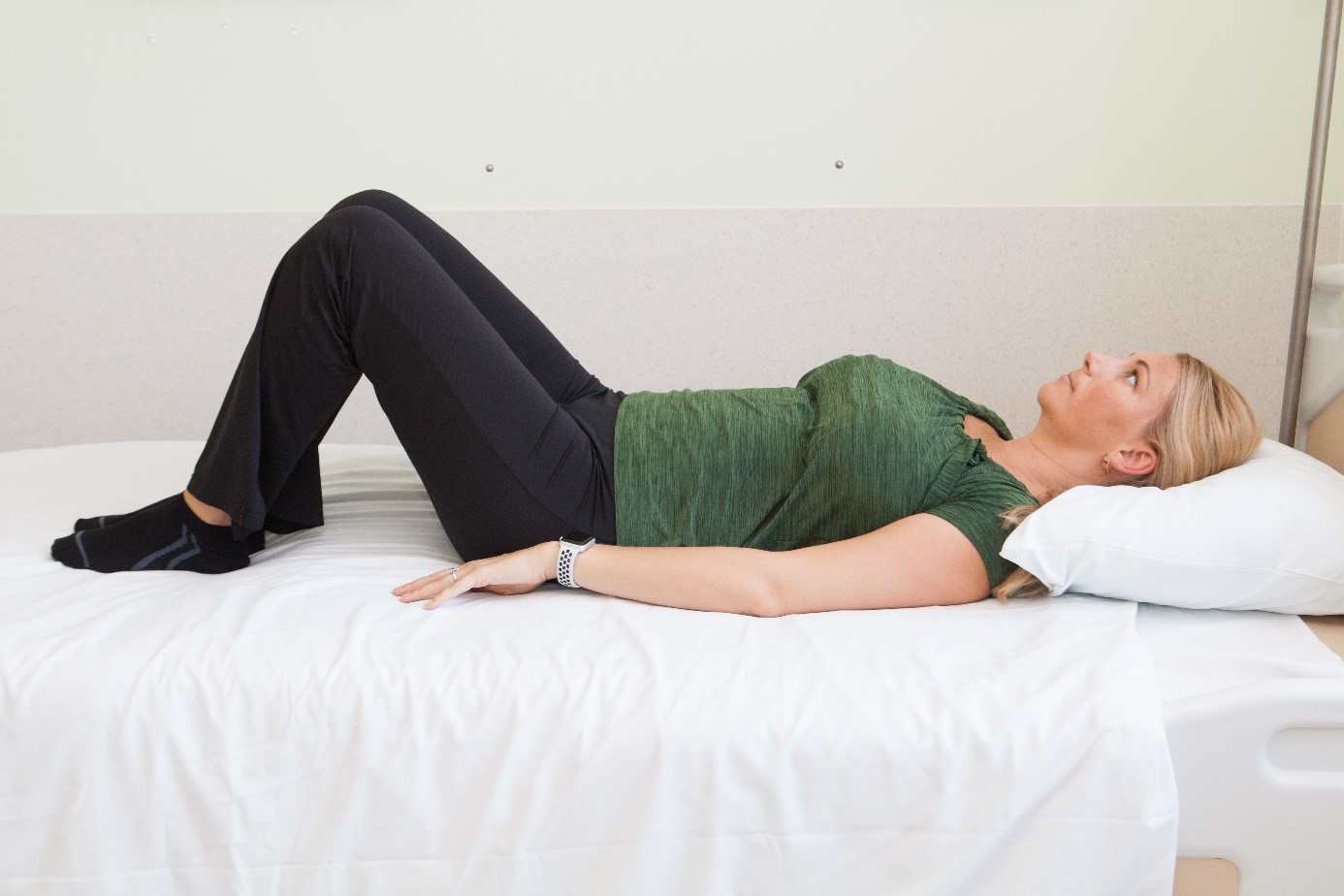
As you breathe in, relax your pelvic floor muscles, and as you breathe out, slightly tighten and pull up the pelvic floor muscles as if trying to stop yourself from passing urine or wind. Then relax the muscles again completely while inhaling and tighten them again while exhaling. Practice contractions and relaxations of the pelvic floor muscles four or five times a day. At first, do the exercises while lying on your back. As soon as you can, start exercising while lying on your side, standing and sitting. Tighten the pelvic floor muscles before coughing, sneezing and lifting your baby/weights to prevent urine leakage.
During the first six weeks, try to lie down for at least one hour during the day to reduce pressure on the pelvic floor.
Abdominal exercise
Abdominal exercises are very important after childbirth. Try to do 10-15 repetitions twice a day.
As you breathe in, relax the abdominal muscles, and as you breathe out, slightly tighten and pull up your stomach/navel and hold the tension for as long as the out-breath lasts. As you breathe in, relax the abdominal muscles again. Try to do the same while lying on your side with your knees bent.
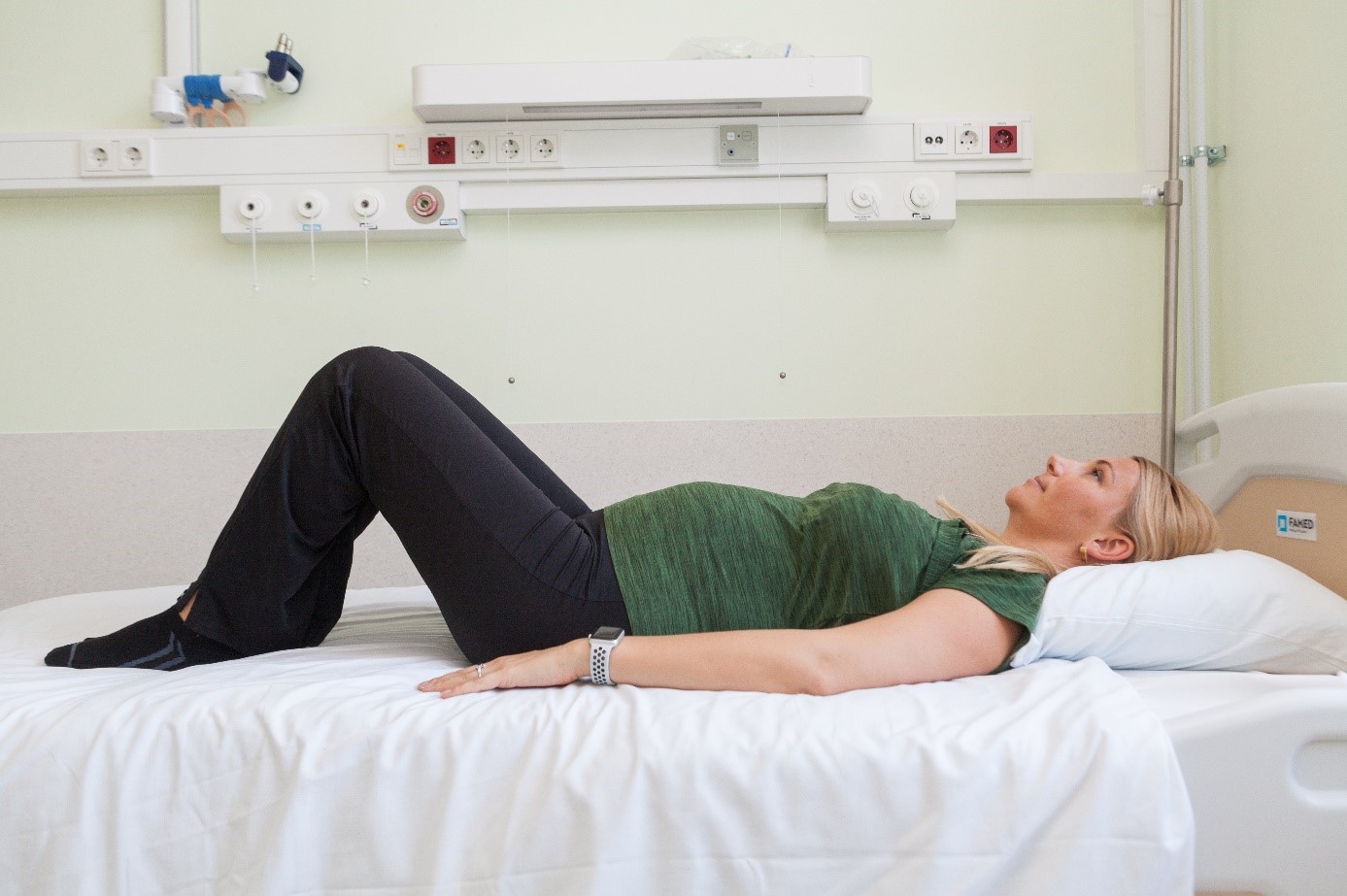
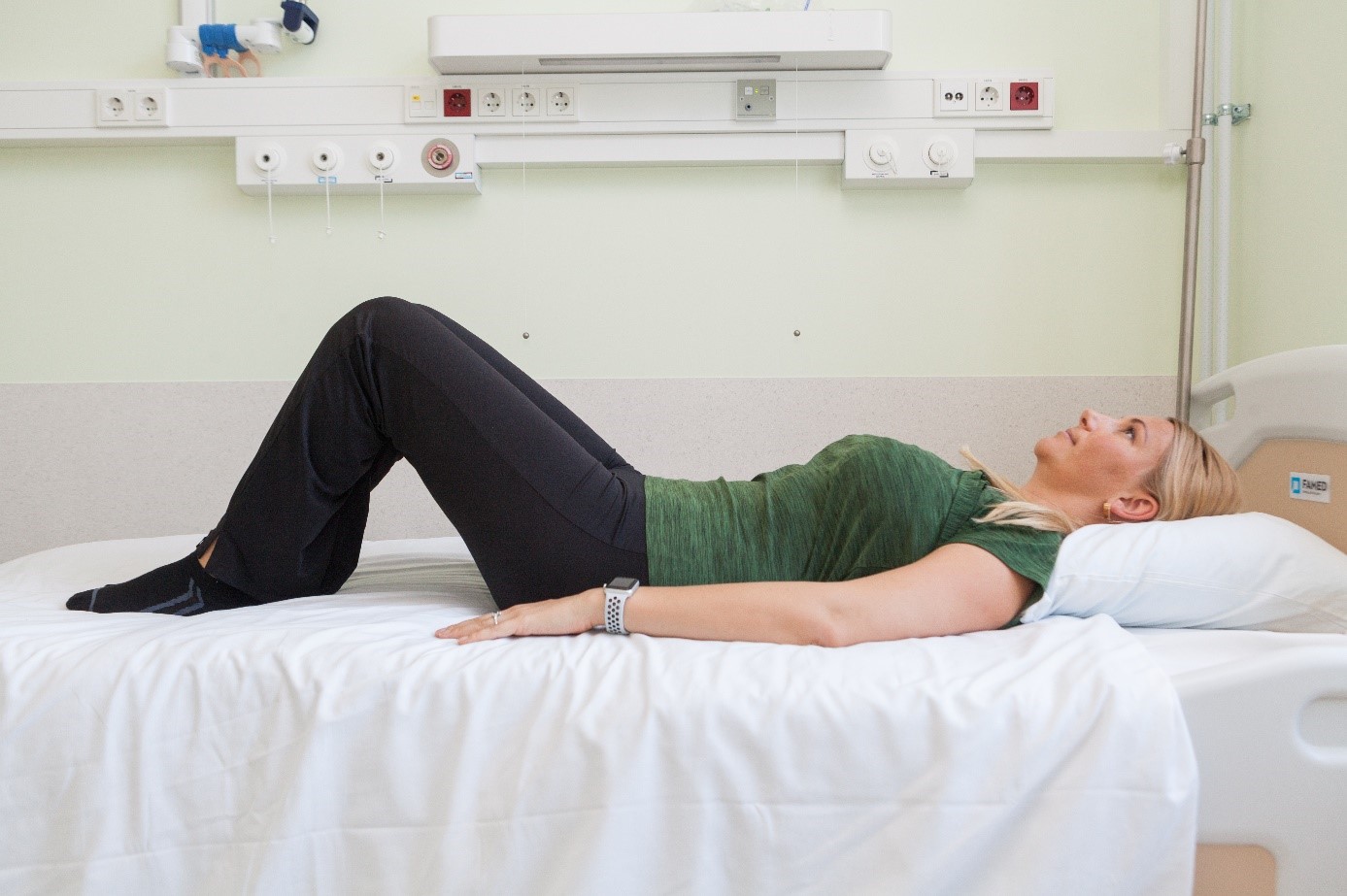
Glute exercise
To train the gluteal muscles, do pelvic lifts. Lie on your back, with your knees bent and feet flat on the ground. Tighten your buttocks and lift up your pelvis, buttocks and back at the same time. Hold the position for a few seconds and then relax. Do 10-15 repetitions. Breathe out as you tighten your muscles. Avoid overextending your back.
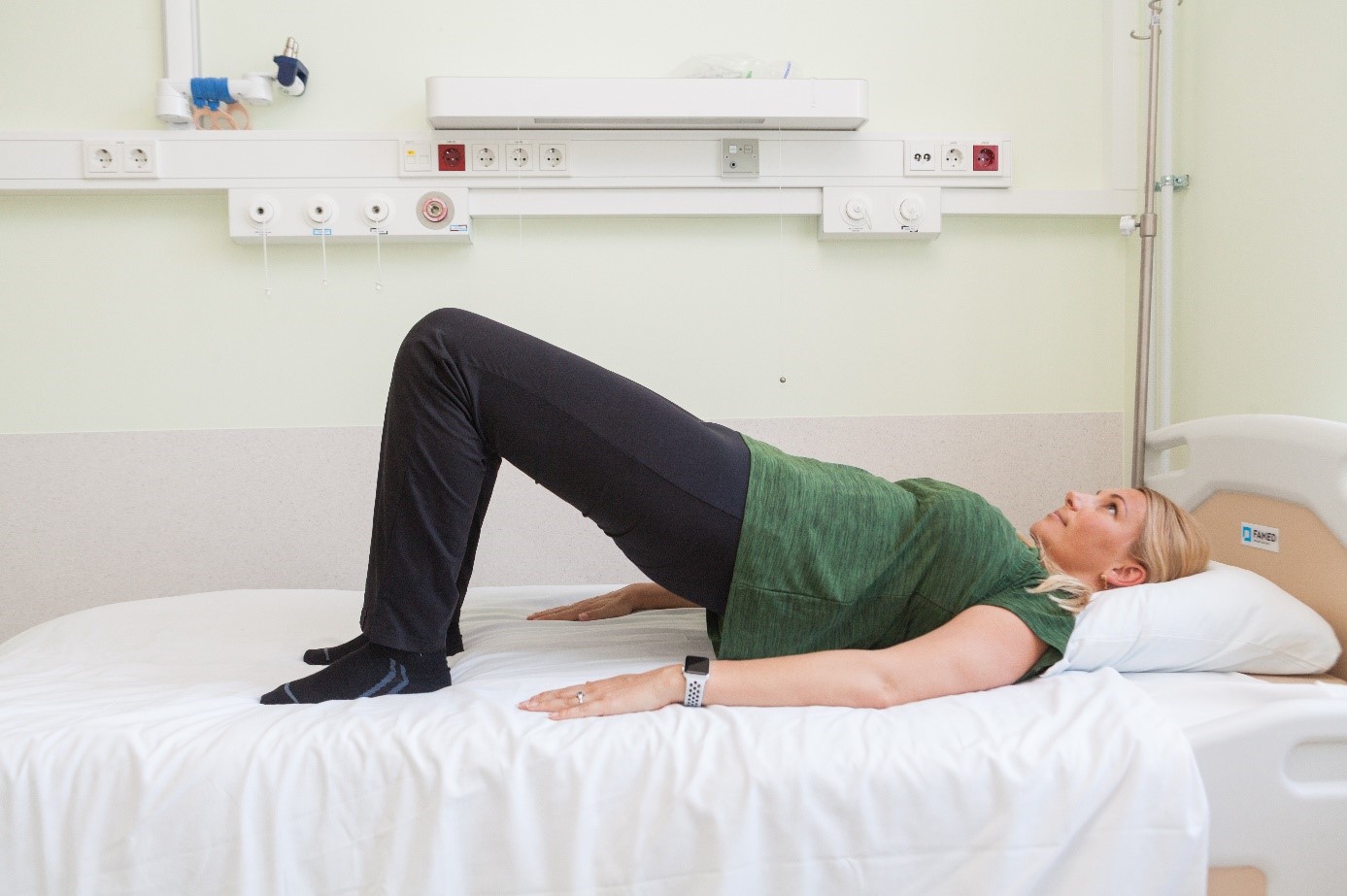
Recovery
The time needed for recovery varies from person to person. Try to avoid activities that cause discomfort. Walk a lot to increase your endurance. Start with a short distance (10-15 minutes) in the first week and gradually increase it according to your comfort level. For the first six to eight weeks after delivery, it is not advisable to have sexual intercourse, take a bath, swim, go to the sauna or do vigorous exercise.
After six to eight weeks, make an appointment with a physiotherapist specialising in pelvic floor muscle training. The physiotherapist will assess your pelvic floor and abdominal muscles and give recommendations for further physical training. All women who have given birth, especially those who have had a perineal tear, an episiotomy or a caesarean section, can make an appointment with a pelvic floor physical therapist. You can also consult a pelvic floor physical therapist earlier if you have the following symptoms:
- Urinary incontinence when coughing, sneezing, lifting your baby/weights or engaging in other activities
- A feeling of heaviness in the pelvic area
- Weak abdominal muscles, abdominal distension
- Back or pelvic pain that interferes with everyday life
- Pain in the pelvic area, in the anterior umbilical region of the abdominal wall or lower down, also in the lower back, sacrum or buttocks
- Umbilical hernia (bulging belly button)
- Urinary or faecal incontinence with a full bladder or bowel
You can book an appointment with a pelvic floor physical therapist over the phone by calling 666 1900 or through the patient portal iPatient. The appointment is subject to a fee. If you are insured and have a referral from a rehabilitation physician of East Tallinn Central Hospital, the service will be reimbursed by the Estonian Health Insurance Fund.
Physiotherapists specialising in pelvic floor muscle training are Triin Jeršov and Ivi Abram.
ITK1059
Approved by the decision of the Care Quality Commission of East Tallinn Central Hospital on 03.05.2023 (protocol no. 9-23)
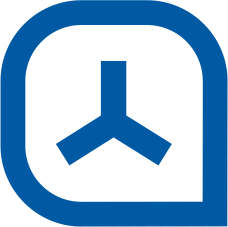 Terviseportaal
Terviseportaal